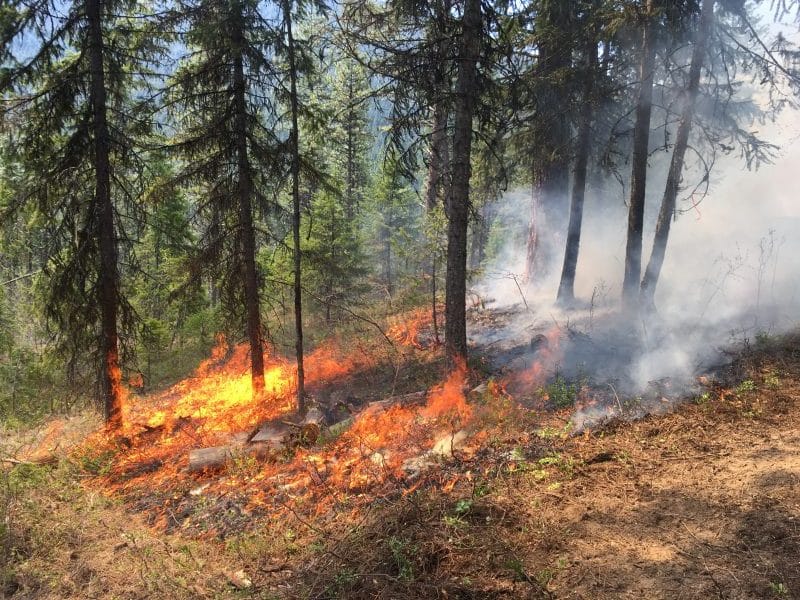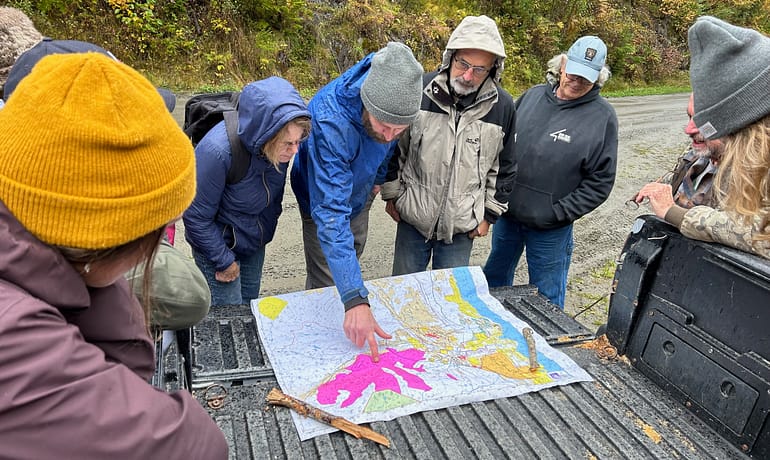The BC Community Forest Association (BCCFA) proposes an expansion in the number and size of community-based tenures around rural and Indigenous communities to help achieve wildfire protection and promote rural development.
Our concept paper provides the rationale for increasing the number and size of community-based tenures, along with preliminary information about the costs and implications. Two case studies, Logan Lake and Quesnel, were chosen to help inform the discussion. Forest Analysis and Inventory Branch provided a cursory analysis of these two examples in Section 3. Forest Tenures Branch, in Section 4, contributed information – in broad strokes, about the potential cost and implications of reapportioning AAC to community-based tenures. But as outlined later in Section 5, the potential upfront costs described are only one side of the ledger. A full multiple accounts or cost/benefit analysis is required to gain a complete understanding of the impacts. Minister Donaldson has asked the BCCFA to work with his staff to conduct the analysis. It is now underway.
Community Forest Program WUI Expansion Report
BCCFA WUI Concept Overview Map
Preliminary Impact Assessment Calculations
Update on the project – A full multiple accounts or cost/benefit analysis is required to gain a deeper understanding of the impacts of the BCCFA concept. Minister of Forests, Lands, Natural Resource Operations and Rural Development Doug Donaldson met with the BCCFA Board and Executive Director in Burns Lake in late May. He is interested in the concept and has asked the BCCFA to work with his staff to conduct the analysis. Discussion on analysis methodology is now underway. Contact Jennifer Gunter with your thoughts.
Introduction to the Concept
British Columbia faces pressing challenges. There is an urgent need to reduce fuel loading and protect communities from the risk of wildfire and other natural disasters; to create more resilient and self-reliant rural economies, and to build shared prosperity by advancing reconciliation with First Nations.
Communities have said for many years that they want to be more engaged in the forest sector, and the government is listening. Premier Horgan, as quoted in the Vancouver Sun on February 14th, stated: “We have lost, I believe, the connection between resources and communities over the past number of years…I want to re-establish that relationship. I want to make sure that every log that is taken from a public forest, the benefit is maximized to the people in the community.”[1]
Community forests offer a proven way forward. Given the successes of BC’s 56 community forests to date, and the ability of the community forest model to achieve multiple, complimentary goals, the BC Community Forest Association (BCCFA) is proposing an expansion of the community forest program, for both new and existing community forests, primarily in the wildland urban interface (WUI).
Our concept would see a ~10 km zone surrounding communities placed primarily in community-based tenures: Community forest agreements, First Nations woodlands licences and woodlot licenses – long-term, area-based and community-held tenures – are the most appropriate mechanism to meet urgent priorities for rural development and community protection. While the BCCFA’s purpose is to promote community forestry, we see the benefit of an integrated mosaic that includes all community-held, area-based tenures.
This initiative would lead to more partnerships between Indigenous and non-Indigenous communities. The community forest tenure has already resulted in many such partnerships – half of the operating community forests are held by First Nations or a partnership between an Indigenous and non-Indigenous community. The potential for positive outcomes is great.
We have chosen a ~10 km zone for initial discussion purposes. This is a critical zone for community protection as confirmed by many communities and forest professionals that experienced wildfires last summer. Often referred to as the “front country”, this zone also encompasses areas around communities where other critical social values and ecosystem services intersect, including community and domestic watersheds, sites of cultural significance, and recreational areas. Further, this zone is of prime importance to First Nations and rural communities as they invest in economic development to become more self-reliant and sustainable.
We recognize that the ~10 km is a concept for discussion and won’t make sense everywhere. Location will depend on topography, land ownership etc. The task will be to look at the landscape around communities and prioritize areas where it makes sense to locate area based, community managed tenures.
Our analysis area includes land within BC Fire Protection Districts that is also within the Provincial Strategic Threat Analysis (PSTA) 2km WUI buffer, plus an 8 km buffer. There are 13.6 million hectares in this 10km WUI buffer. Currently, community forest agreements operate on 5.7% of that area (they account for 1.8% of the landbase provincially). We have provided a BCCFA WUI Concept Overview Map on a provincial scale showing the distribution of tenures and land ownership in that zone.
Implementing this concept will require a significant re-apportionment of management rights to communities and a new vision for the lands that surround them. Considering the provincial government’s commitment to implement UNDRIP, coupled with the need to reduce the threat of wildfire to communities, a significant change like this is worthy of serious consideration.
Furthermore, by increasing the size of the community forest program, the BC Government can facilitate the growth of a diverse forest products manufacturing sector. Community forests are independent log sellers. They sell the full spectrum of species and logs available on their land base on the open market to a range of customers. By delinking the woodlands from the major manufacturers each log can find its best market and end use, capturing more value for the wood.
Community-based tenures hold the potential to address community wildfire protection, create sustainable local jobs, and help government achieve its broad objectives. The BCCFA’s experience demonstrates that community forests are powerful tools for:
- Building partnerships between Indigenous and non-Indigenous communities
- Energizing rural development in a manner consistent with the principles of community economic development;
- Protecting communities from catastrophic wildfire and adapting to climate change.
By providing increased rights and responsibilities to manage adjacent forests, the province can empower communities to become true partners in modern, collaborative, and sustainable land management.
[1] http://vancouversun.com/opinion/columnists/vaughn-palmer-b-c-government-trying-to-re-connect-resources-to-communities
Related Post
Province increases funding for community forest wildfire risk reduction
News Release We are pleased to announce that the
BC introduces new measures on old growth, innovation, forest stewardship
New announcement on process and funding for policy reforms



